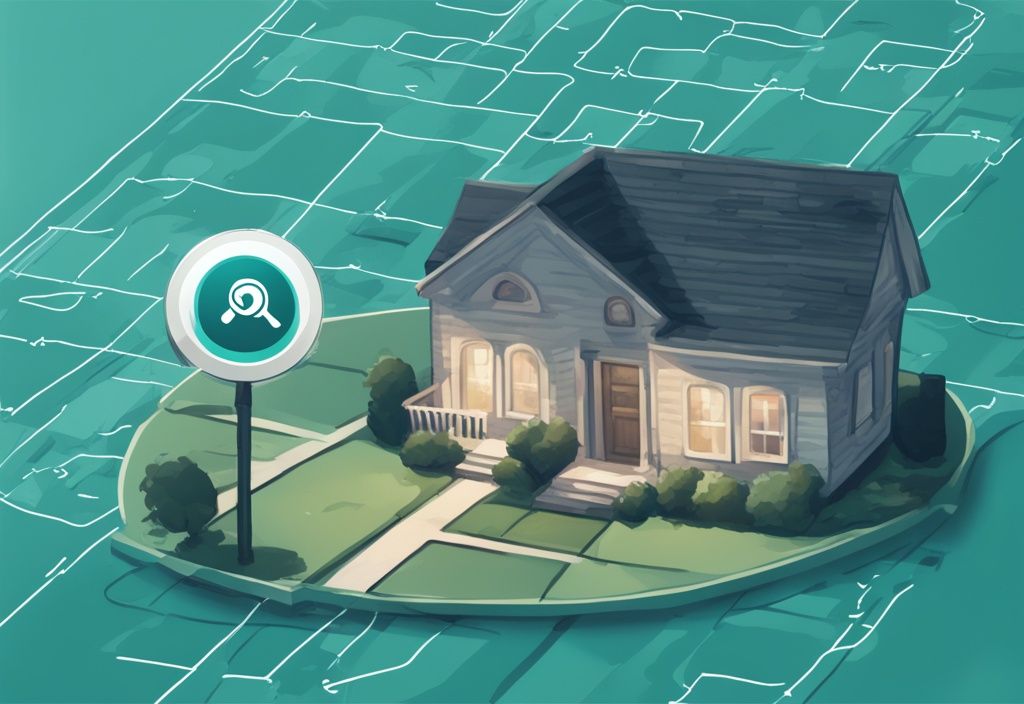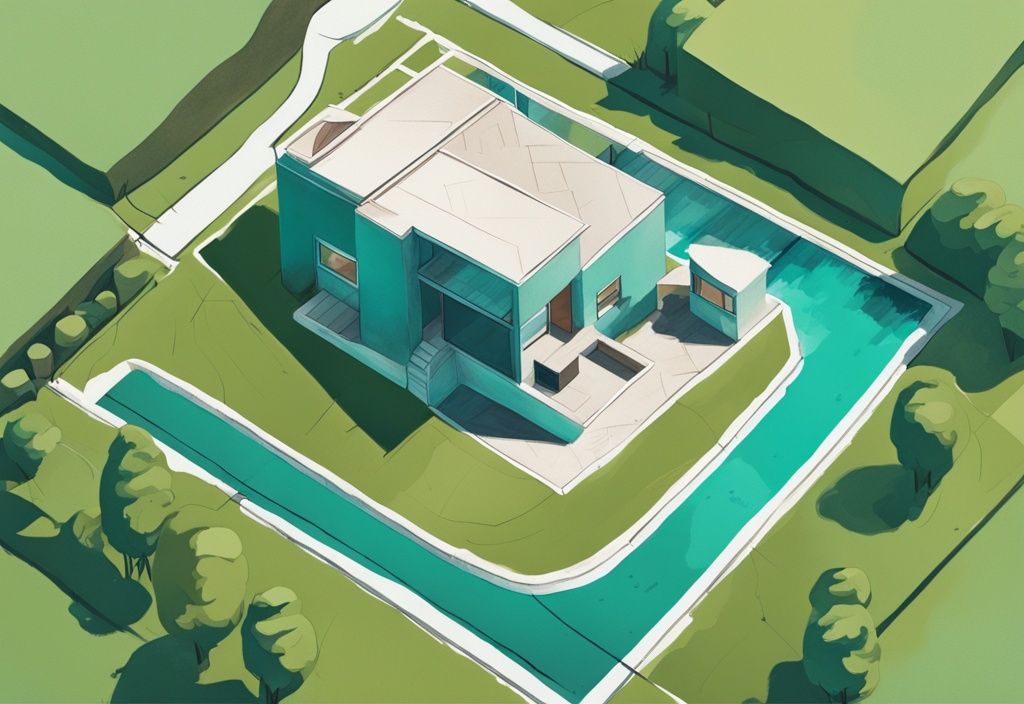Have you ever asked yourself, “What is a PID in real estate?” If you’re a property enthusiast like me, Alex Harper, this term might’ve caught your curiosity. When I first heard of a Public Improvement District (PID), it seemed like just another real estate alphabet soup. But boy, was I wrong!
Delving deeper into this topic, I discovered that PID is a crucial tool, whether you’re looking to spruce up your property’s appeal or exploring viable real estate investments. PIDs provide a unique way to fund community improvements, potentially boosting neighborhood charm and property values significantly, which is essential to understand as Public Improvement Districts (PIDs) are becoming more prevalent across Texas. For more information, you can visit https://agrilifeextension.tamu.edu/asset-external/understanding-public-improvement-districts-pids/. It’s like a secret weapon in your real estate war chest.
So, buckle up as we demystify what a PID is, and how it could be your golden ticket to elevate your real estate game!
Defining Public Improvement Districts (PID)
Understanding What a PID Is
A Public Improvement District (PID) is a designated area within a city or county where property owners choose to add extra taxes or fees on themselves to fund various community projects and improvements. Authorized by Chapter 372 of the Local Government Code, PIDs allow residents and business owners to proactively invest in their locality’s development, enhancing infrastructure and amenities.
Unlike traditional homeowner associations (HOAs) that typically focus on maintaining shared spaces within private residential communities, PIDs aim for broader community enhancements. The collected fees from property owners are allocated to public improvements that benefit the entire district. This includes projects like landscaping, roadways, parks, recreation, public safety, security, parking facilities, and even affordable housing.
PIDs can be set up in both residential and commercial areas. This flexibility ensures diverse infrastructure needs are met, promoting developments that boost the overall quality of life. By improving public spaces and infrastructure, PIDs help create more attractive environments for current residents and potential buyers, which can positively impact property values.
Understanding what a PID is in real estate is crucial for property owners and investors who want to grasp the benefits and implications of such districts. These areas bring a collaborative approach to local development, aiming to enhance community infrastructure and drive long-term property value growth.
PIDs represent a proactive way for communities to work towards their own betterment, leveraging collective contributions for widespread benefits. This model highlights the importance of civic participation and investment in urban and suburban planning, making PIDs an exciting concept in contemporary real estate development.
Why PIDs Matter in Real Estate
When you dive into the world of property investments, you might stumble upon the term “PID.” But what is a PID in real estate, and why are they such a big deal? Let’s break it down.
The Role of PIDs in Enhancing Property Value
Understanding what is a PID in real estate involves recognizing its significant impact on boosting property values within specific districts. Think of PIDs as a super-charged community fund. They pool resources to upgrade local infrastructure and amenities, making neighborhoods more appealing and livable.
Imagine well-maintained parks, better roadways, and enhanced public safety. These enhancements not only improve the quality of life but also turn properties into hotcakes for potential buyers.
When a neighborhood shines with beautiful landscaping, accessible recreational spaces, and robust public services, its appeal skyrockets. Homeowners in these areas often see a sustained growth in property values over the long term. It’s like watching your investments blossom right in front of your eyes!
PID vs. HOA: A Quick Comparison
While both PIDs (Public Improvement Districts) and HOAs (Home Owners’ Associations) collect fees from property owners, their roles and functions are quite different.
Let’s break it down:
- HOA Fees are used for maintaining shared spaces and amenities within a private community. Think of clubhouses, swimming pools, and community landscaping—spaces that are exclusive to residents.
- PID Fees, on the other hand, focus on improving broader public infrastructure. We’re talking essentials like road improvements, public safety measures, and recreational spaces that benefit the entire community, not just a select few.
This wider scope means PIDs contribute significantly to public welfare and property value enhancement in ways that HOAs typically can’t. Plus, PID assessments often come with the bonus of being tax-deductible, offering a financial perk that HOA fees usually don’t provide.

Grasping these differences helps property owners and investors make informed decisions. Knowing where your money goes and what benefits it brings can truly change how you view your community investments and improvements.
How PIDs are Funded
Exploring Special Assessment Taxes
Special assessment taxes are like a little extra boost added on top of your regular property taxes within a Public Improvement District (PID). This extra financial lift is essential for PIDs to take on significant community enhancements. Whether it’s landscaping, new roads, recreational areas, or enhanced public safety measures, these taxes fund the bonds issued for these vital improvements.
Unlike your usual property taxes, special assessment taxes stay the same once the bonds are issued. That means your payment is consistent throughout the repayment period, which can last anywhere from five to 40 years based on how grand the projects are. This fixed rate gives property owners a clear financial picture, making it easier to plan your budget while knowing you’re contributing to your community’s growth.
Unveiling the Mystery of Bond Financing
Bond financing is the backbone of a PID’s funding structure. To kick-start major projects, PIDs utilize bonds secured by liens against properties within the district. This approach provides the upfront capital needed to get things rolling swiftly, without waiting for funds to trickle in from property taxes.
These bonds are paid back through the special assessment taxes we mentioned earlier, calculated based on the appraised value of properties within the PID. This method ensures that the cost of improvements is spread fairly among property owners who benefit from the upgrades. How much each property owner pays depends on the scale of the projects and the number of properties sharing the financial load. This balances the need for substantial community upgrades with fairness in financial contributions. In summary, the synergy between special assessment taxes and bond financing allows PIDs to tackle a wide range of community improvements efficiently. If you’re looking for a lighter take, check out the best real estate jokes for some humor in the industry. By understanding what a PID is in real estate, property owners can appreciate the added value these districts bring to local infrastructure and amenities, ultimately boosting property values and quality of life.
What It Takes to Manage a PID
A Public Improvement District (PID) is a unique tool in real estate that brings together the community to fund and manage local improvements. At the heart of any PID is a dedicated board of elected officials who are tasked with several critical responsibilities. Let’s take a closer look at how these boards operate and the significant impact they have on their districts.
How Elected Officials and Boards Impact PIDs
Managing a PID isn’t just about handling finances—it’s about fostering a thriving community. Imagine your neighborhood gets funds for a new park or upgraded street lighting; this doesn’t happen by magic but through the meticulous efforts of a managing board.
These elected officials are pivotal in ensuring the district’s goals are met efficiently and transparently. One of their primary responsibilities is establishing and managing the budget. Think of it like planning a big family reunion—careful preparation and resource allocation are key. The funds, collected from special assessment taxes, go towards various community projects, such as enhancing local infrastructure or adding new amenities. When budgeted properly, these funds maximize community benefits.
Oversight of improvements is another crucial duty. This isn’t just a matter of ticking boxes; it’s making sure everything is on track, like overseeing a home renovation to ensure it’s done on time, within budget, and to high standards. Effective oversight means quickly addressing any issues that pop up, maintaining the project’s integrity, and reassuring the community.
Setting the assessment amounts for property owners is also a key function. Imagine if every family member had to pitch in for that family reunion—how much each person contributes needs to be fair and justified. The board must balance the community’s improvement needs against the financial capacity of its residents. No one wants to feel overburdened, so this process requires a thoughtful approach.
Transparency and communication with property owners are paramount. Just as a clear itinerary helps keep a family reunion running smoothly, clear documentation and communication ensure all stakeholders are informed about decisions and ongoing project progress. This practice bolsters trust and a cooperative spirit within the community.
The managing board’s role extends beyond routine tasks. Their decisions directly influence the quality of life and property values in the district. Good, transparent management doesn’t just keep things running smoothly; it makes the district a better place to live, continually enhancing community appeal and value.
Are PIDs Legal? What You Should Know
Decoding Mandatory Disclosures for Home Buyers
Understanding what is a PID in real estate is a game-changer, especially when you’re eyeing a property in these specific districts. As a home buyer, it’s vital to know that you must receive a mandatory notice about the property’s location within a Public Improvement District (PID) before or at the time of contract signing. This disclosure isn’t just paperwork—it’s about transparency. It allows you to make savvy decisions regarding the additional financial obligations tied to PID assessments.
Now, if the seller fails to provide these disclosures about what is a PID in real estate, there can be pretty hefty consequences. The contract for the property purchase might be canceled, or the seller could face monetary penalties. These rules are in place to protect you, ensuring you’re aware of any potential PID-related costs before you commit.

Recent changes in legislation, particularly HB 1543, have strengthened transparency in real estate transactions. This law has revamped the mandatory notice language to make it more clear and comprehensible. Now, this notice isn’t just a formality—it must be signed by you and recorded. This process solidifies your acknowledgment and understanding of the PID’s implications. By standardizing the notice language, HB 1543 aims to eliminate any confusion, fostering better communication between buyers and sellers.
Going Deeper: PIDs vs. MUDs (Municipal Utility Districts)
PIDs and MUDs are two distinct types of districts in the realm of real estate, each serving unique roles in community development. Let’s explore the key differences between them to better understand their individual contributions to property management.
Identifying Key Differences
Understanding the distinctions between Public Improvement Districts (PIDs) and Municipal Utility Districts (MUDs) is crucial for grasping the broader landscape of real estate and community development. Both entities serve different roles and have unique operational frameworks, which influence their formation, governance, and impact on community projects.
PIDs, commonly asked under the query ‘what is a PID in real estate,’ are special assessment districts created to fund public improvements within a designated area. Unlike MUDs, PIDs are not political entities, meaning they do not have the regulatory authority typically associated with governmental or quasi-governmental bodies.
Instead, PIDs are governed by the local municipality’s body, such as a city council, offering a reassuring level of stability. This governance minimizes concerns about board turnover and integrity. The governing body oversees the planning, funding, and execution of community-enhancing projects like road improvements, landscaping, and public safety enhancements.
On the other hand, MUDs are specifically established to provide utility services like water, sewer, and drainage infrastructure. They possess political authority, operating similarly to local government entities, and must secure approval from the Texas Commission on Environmental Quality (TCEQ) before formation.
This regulatory requirement ensures that MUDs meet stringent environmental and operational standards. MUDs have the power to levy taxes and issue bonds independently to support utility infrastructure, which differentiates them from PIDs.
In summary, while PIDs focus on funding and managing broad public improvements without requiring TCEQ approval, MUDs are specialized entities created to manage essential utility services with full political and regulatory oversight.
Understanding these differences helps property owners and potential buyers navigate the landscape of community funding and infrastructure development more effectively.
Navigating PID Controversies and Considerations
When diving into the topic of what a PID in real estate is, it’s essential to understand the complexities of managing disagreements among property owners within a Public Improvement District (PID). These disagreements often arise due to differing views on the necessity of proposed improvements and the accompanying financial implications. Let’s break down the main areas of contention and explore how to navigate them effectively.
Managing Disagreements Among Property Owners
One common flashpoint is the fairness of assessments. It’s not unusual for some property owners to feel they are shouldering a disproportionate share of the costs or that the benefits of the improvements are unevenly distributed. This can lead to significant tension within the community.
Additionally, the decision-making process itself can be a major sticking point. Lack of transparency can make property owners feel out of the loop, leading to mistrust and dissatisfaction. Ensuring everyone is adequately informed and included in important discussions is crucial.
Effective communication is essential to address these issues. Keeping everyone updated about proposed improvements, cost assessments, and the decision-making process can mitigate misunderstandings and build trust. Consider organizing regular meetings, providing clear and accessible documentation, and hosting open forums for questions and feedback. These steps can foster a more inclusive and cooperative environment.
Transparency in operational practices plays an equally vital role. By maintaining a clear record of fund usage and providing regular updates on project progress and expenditures, PID boards can demonstrate their commitment to accountability. This level of openness can help garner community support and reduce opposition.

In conclusion, managing disagreements in a PID requires diligent communication and transparency. Creating an environment of openness and fairness ensures that the broader community benefits from the improvements and services funded by the additional taxes or fees. Embracing these strategies, the PID can function smoothly and effectively, fostering a sense of shared purpose and collective gain among property owners.
Your Top Questions About PID in Real Estate, Answered
What Happens to PID Assessments if I Sell my Home?
When you decide to sell your home, understanding PID assessments can save you from surprises. These assessments stay with the property until fully paid off. Think of it like handing over a relay baton – the new homeowner takes on the remaining payments. Be sure to disclose any PID assessments to avoid potential legal headaches. It’s all about keeping things transparent and straightforward.
Are PID Assessments Tax-Deductible?
The good news? PID assessments are typically tax-deductible, unlike HOA fees. This can feel like finding an unexpected gift in your pocket – a financial perk while you contribute to upgrading your community. Consider it a win-win, as it offers a way to balance your tax bill while boosting the neighborhood.
What Projects Can a PID Fund?
PIDs are like community treasure chests, funding a variety of enhancement projects. Imagine walking through a beautifully landscaped park or enjoying a new fountain – these are just a few examples. PIDs cater to projects like enhanced landscaping, additional open spaces, lakes, fountains, improved city parks, shade structures, and recreational amenities. The aim? To elevate the community’s quality of life and support property values in the long run. Just picture your neighborhood growing more vibrant and attractive, thanks to these thoughtful investments.
Final Thoughts on PIDs in Real Estate
Public Improvement Districts (PIDs) offer a dynamic way to fund community enhancements, which can significantly uplift property values and improve the quality of life for residents. Knowing what a PID in real estate entails is vital for both property owners and potential buyers.
PIDs give communities the power to make notable improvements without putting the burden solely on municipal budgets. In a PID, property owners consent to pay additional taxes or fees. These funds are funneled into various public infrastructure projects such as landscaping, road improvements, parks, and even public safety initiatives. Think of it like chipping in for a community potluck; everyone contributes a bit, and the collective effort results in a better meal—and in this case, a more appealing neighborhood.
Understanding the structure, benefits, and legal aspects of PIDs is crucial. For those interested in how these might intersect with new real estate laws in 2024, staying informed is essential. The Local Government Code Chapter 372 lays down the legal groundwork for setting up PIDs. It ensures the collected fees are used transparently and effectively for public benefit.
Unlike HOA fees that mainly cover maintenance within private communities, PID fees benefit the entire community and are often tax-deductible. It’s the difference between a private club and a public park—both are great, but one serves a broader purpose.
Effective management plays a critical role here, much like how a real estate novelist captures the dynamics of property markets.
A board of elected officials oversees PIDs, taking on responsibilities like budgeting, setting assessment amounts, and maintaining transparency. Good management practices help build trust among property owners and ensure funds are used efficiently. Regular communication with residents and a clear decision-making process can help avoid misunderstandings and conflicts. Think of it as running a transparent household; everyone knows where their money is going, and there’s a collective satisfaction in seeing improvements.
In summary, PIDs provide a sustainable way to fund community improvements, positively impacting property values and the living experience. It’s essential for both current property owners and prospective buyers to grasp what a PID in real estate involves to make informed decisions. Transparency and effective management are key to maximizing the benefits and minimizing challenges associated with PIDs.
Hi, I’m Alex Harper, a real estate expert with over ten years of experience in property management and legal advice. My passion is making the often complicated world of real estate understandable. I share practical tips and simple solutions to help you make better decisions – whether you’re buying a home, renting or just want to learn more about the industry. With my knowledge and experience, I want you to feel well-informed and confident in your real estate projects. Let’s tackle this together!




